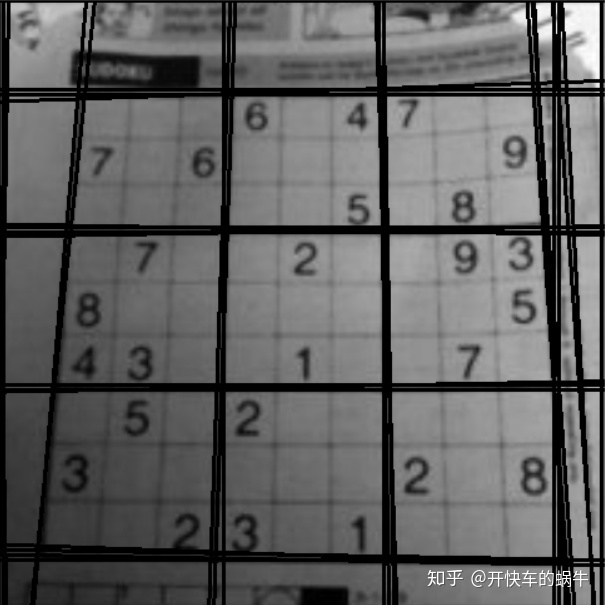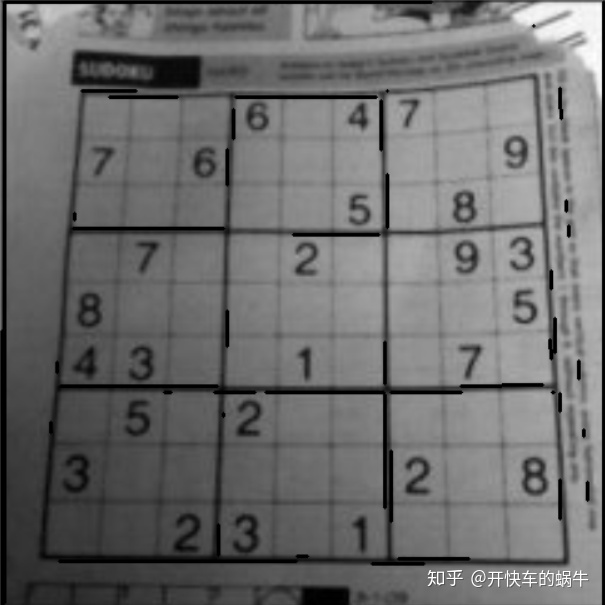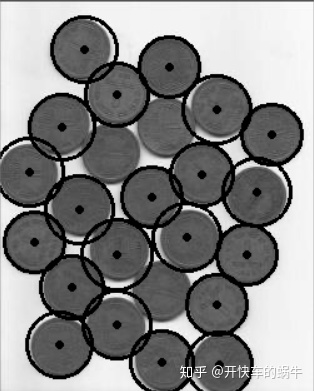霍夫变换(Hough Transform)是图像处理中的一种特征提取技术,它通过一种投票算法检测具有特定形状的物体。Hough变换是图像处理中从图像中识别几何形状的基本方法之一。Hough变换的基本原理在于利用点与线的对偶性,将原始图像空间的给定的曲线通过曲线表达形式变为参数空间的一个点。这样就把原始图像中给定曲线的检测问题转化为寻找参数空间中的峰值问题。也即把检测整体特性转化为检测局部特性。比如直线、椭圆、圆、弧线等。
简单说opencv中霍夫变换可以帮助我们查找到一幅图像当中的直线或者圆。
import cv2
import numpy as np
from matplotlib import pyplot as pltimg = cv2.imread('002.tif', 0)
rows, cols = img.shape
img_p = img.copy()
img_C = img.copy()edges = cv2.Canny(img, 50, 170, apertureSize=3)
# 精度:取值范围0.1-2(默认值1)
accuracy = 2
# 阈值:取值范围1-255(小于200意义不大,默认值200)
threshold = 200# 霍夫曼直线变换
lines = cv2.HoughLines(edges, accuracy, np.pi/180, threshold)
for line in lines:rho, theta = line[0]a = np.cos(theta)b = np.sin(theta)x0 = a*rhoy0 = b*rhox1 = int(x0 + 1000*(-b))y1 = int(y0 + 1000*(a))x2 = int(x0 - 1000*(-b))y2 = int(y0 - 1000*(a))cv2.line(img, (x1, y1), (x2, y2), (0, 0, 255), 2)# 概率霍夫直线变换
lines = cv2.HoughLinesP(edges, accuracy, np.pi/180, threshold, minLineLength=0, maxLineGap=0)
for line in lines:x1, y1, x2, y2 = line[0]# 绘制直线cv2.line(img_p, (x1, y1), (x2, y2), (0, 255, 0), 2)_, thresh= cv2.threshold(img, 150, 255, cv2.THRESH_TOZERO)
# 霍夫圆变换
# dp累加器分辨率与图像分辨率的反比默认1.5,取值范围0.1-10
dp = 2
# minDist检测到的圆心之间的最小距离。如果参数太小,则除了真实的圆圈之外,还可能会错误地检测到多个邻居圆圈。 如果太大,可能会错过一些圈子。取值范围10-500
minDist = 20
circles = cv2.HoughCircles(thresh, cv2.HOUGH_GRADIENT, dp, minDist, param1=45, param2=45, minRadius=0, maxRadius=50)
circles = np.uint16(np.around(circles))
for i in circles[0, :]:# 绘制外圆cv2.circle(img_C, (i[0], i[1]), i[2], (0, 255, 0), 2)# 绘制圆心cv2.circle(img_C, (i[0], i[1]), 2, (0, 0, 255), 2)cv2.imshow('img', img)
cv2.imshow("img-p", img_p)
cv2.imshow("img_C", img_C)
cv2.waitKey()




)






...)









